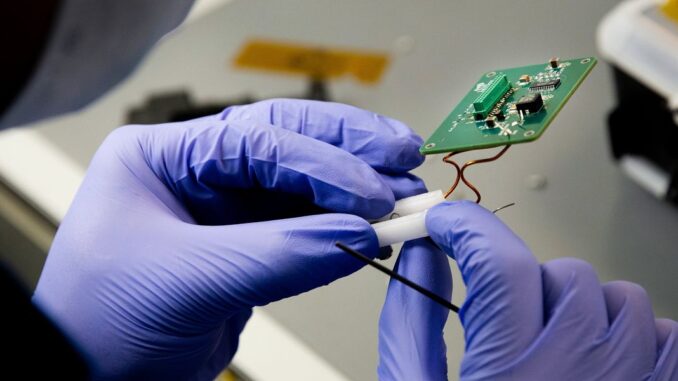
More and more satellites are being added to low Earth orbit (LEO) every month. As that number continues to increase, so do the risks of that critical area surrounding Earth becoming impassable, trapping us on the planet for the foreseeable future. Ideas from different labs have presented potential solutions to this problem, but one of the most promising, electrodynamic tethers (EDTs), have only now begun to be tested in space. A new CubeSat called the Spacecraft for Advanced Research and Cooperative Studies (SPARCS) mission from researchers at the Sharif University of Technology in Tehran hopes to contribute to that effort by testing an EDT and intersatellite communication system as well as collecting real-time data on the radiation environment of its orbital path.
aspect_ratio
SPARCS actually consists of two separate CubeSats. SPARCS-A is a 1U CubeSat primarily designed as a communications platform, with the mission design requiring it to talk to SPARCS-B, which is a 2U CubeSat that, in addition to the communication system, contains a EDT. That EDT, which can measure up to 12 meters in length, is deployed via a servomotor, with a camera watching to ensure proper deployment.
EDTs are essentially giant poles with electric current running through them. They use this current, and the tiny magnetic field it produces, to push off of the Earth’s natural magnetic sphere using a property called the Lorentz force. This allows the satellite to adjust its orbit without the use of fuel, simply by orienting its EDT in a specific direction (which the EDT itself can assist with) and then using the Lorentz force to either push it up into a higher orbit, or—more significant for the purposes for technology demonstration—to slow the CubeSat down to a point where it can make a controlled entry into the atmosphere.
Why Are EDTs Important for Satellites?
That controlled-entry feature is why EDTs have garnered so much attention. Previous missions, such as KITE from JAXA and MiTEE from the University of Michigan, have already attempted to use EDTs to change their orbits. Unfortunately neither of those missions successfully utilized their EDT, though a follow-up mission called MiTEE-2 is in the works with an even larger EDT than SPARCS.
The final piece of SPARCS’ kit is its dosimeter, which is intended to monitor the radiation environment of its orbit. As anyone familiar with spacecraft design knows, radiation hardening of electronics is absolutely critical to the success of a mission, but it is also expensive and time consuming, so it is best done at a minimal required level. Understanding the radiation environment of this popular orbital path can help future engineers make better, and hopefully less expensive, design decisions tailored to operation in this specific area.
Engineers have already finalized the design for the mission and have run simulations showing its expected operations. They have now moved on to building an engineering model of the two CubeSats, allowing them to validate their design and test the real-world implementation before it is ready for launch. Given the current turmoil in that region of the world, there is a chance that conflict could put a halt to development of this system. But, if successfully tested and launched, the very first demonstration of an EDT system could be deployed in the not-too-distant future.
From Your Site Articles
Related Articles Around the Web





Be the first to comment